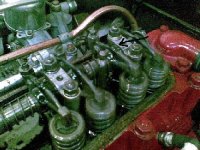356roadster
Member
Offline
I had a great tour through the swiss alps on the weekend with my 100M which had a full engine rebuilt 9000mls ago (but: this was in the 80s..... the car was sitting in a collection then for a long period afterwards). the tour was a great experience we have passed a lot of scenic routes and towns like st.moritz, klosters or davos..... the car performed well; perfect oil pressure, perfect water and oil temperature, perfect alfin drum brakes. it was a sheer pleasure....
but: :crazy:
the car needed lot´s of oil (around 2 litres for 1000kms) but there is no blue smoke, only the normal leaks (which we all know) and also no other bad signs (no oil in the water etc.).
Now I don´t know what to think about this??? It never consumed so much before and I had a new oil service (20W50) before starting to switzerland.
Do you have any ideas how to proceed now???
Thank you for your recommendations!!
Wolfgang
but: :crazy:
the car needed lot´s of oil (around 2 litres for 1000kms) but there is no blue smoke, only the normal leaks (which we all know) and also no other bad signs (no oil in the water etc.).
Now I don´t know what to think about this??? It never consumed so much before and I had a new oil service (20W50) before starting to switzerland.
Do you have any ideas how to proceed now???
Thank you for your recommendations!!
Wolfgang

 Hi Guest!
Hi Guest!

 smilie in place of the real @
smilie in place of the real @
 Pretty Please - add it to our Events forum(s) and add to the calendar! >>
Pretty Please - add it to our Events forum(s) and add to the calendar! >> 




